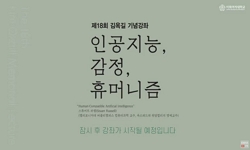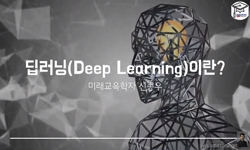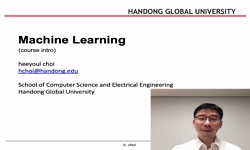This paper proposes an arts and culture content creation tool powered by artificial intelligence. With the recent advances in technologies including artificial intelligence, there are active research activities on creating art and culture contents. Ho...
http://chineseinput.net/에서 pinyin(병음)방식으로 중국어를 변환할 수 있습니다.
변환된 중국어를 복사하여 사용하시면 됩니다.
- 中文 을 입력하시려면 zhongwen을 입력하시고 space를누르시면됩니다.
- 北京 을 입력하시려면 beijing을 입력하시고 space를 누르시면 됩니다.
https://www.riss.kr/link?id=A107894094
- 저자
- 발행기관
- 학술지명
- 권호사항
-
발행연도
2021
-
작성언어
Korean
- 주제어
-
KDC
567
-
등재정보
KCI등재
-
자료형태
학술저널
- 발행기관 URL
-
수록면
489-499(11쪽)
-
KCI 피인용횟수
0
- DOI식별코드
- 제공처
-
0
상세조회 -
0
다운로드
부가정보
다국어 초록 (Multilingual Abstract)
This paper proposes an arts and culture content creation tool powered by artificial intelligence. With the recent advances in technologies including artificial intelligence, there are active research activities on creating art and culture contents. However, it is still difficult and cumbersome for those who are not familiar with programming and artificial intelligence. In order to deal with the content creation with new technologies, we analyze related creation tools, services and technologies that process with raw visual and audio data, generate new media contents and visualize intermediate results. We then extract key requirements for a future creation tool for creators who are not familiar with programming and artificial intelligence. We finally introduce an intuitive and integrated content creation tool for end-users. We hope that this tool will allow creators to intuitively and creatively generate new media arts and culture contents based on not only understanding given data but also adopting new technologies.
참고문헌 (Reference)
1 "tSNE Java Script demo"
2 A. Ramesh, "Zero-Shot Text-to-Image Generation"
3 J. Redmon, "YOLOv3: An Incremental Improvement"
4 J. Redmon, "YOLO9000: Better, Faster, Stronger" 6517-6525, 2017
5 A. S. Cowen, "What music makes us feel: At least 13 dimensions organize subjective experiences associated with music across different cultures" 117 (117): 1924-1934, 2020
6 L. Maaten, "Visualizing High-Dimensional Data Using t-SNE" 9 : 2579-2605, 2008
7 "The Next Rembrandt"
8 "Teachable Machine"
9 "T-SNE visualization"
10 C. Weng, "Photo Wake-Up: 3D Character Animation From a Single Photo"
1 "tSNE Java Script demo"
2 A. Ramesh, "Zero-Shot Text-to-Image Generation"
3 J. Redmon, "YOLOv3: An Incremental Improvement"
4 J. Redmon, "YOLO9000: Better, Faster, Stronger" 6517-6525, 2017
5 A. S. Cowen, "What music makes us feel: At least 13 dimensions organize subjective experiences associated with music across different cultures" 117 (117): 1924-1934, 2020
6 L. Maaten, "Visualizing High-Dimensional Data Using t-SNE" 9 : 2579-2605, 2008
7 "The Next Rembrandt"
8 "Teachable Machine"
9 "T-SNE visualization"
10 C. Weng, "Photo Wake-Up: 3D Character Animation From a Single Photo"
11 Z. Cao, "OpenPose:Realtime Multi-Person 2D Pose Estimation Using Part Affinity Fields" 43 (43): 172-186, 2021
12 "Music visualization"
13 H. Dong, "MuseGAN: Multi-track Sequential Generative Adversarial Networks for Symbolic Music Generation and Accompaniment" 2018
14 Z. Wolkowicz, "Midivis: Visualizing Music Structure via Similarity Matrices" 53-56, 2009
15 "Magenta"
16 D. M. Blei, "Latent Dirichlet Allocation" 3 : 993-1022, 2003
17 C. Sievert, "LDAvis: A method for visualizing and interpreting topics" 63-70, 2014
18 T. Ishibashi, "Investigating audio data visualization for interactive sound recognition" Association for Computing Machinery 67-77,
19 A. Krizhevsky, "ImageNet classification with deep convolutional neural networks" Curran Associates Inc 1 : 1097-1105,
20 P. Isola, "Image-to-Image Translation with Conditional Adversarial Networks" 5967-5976, 2017
21 P. Isola, "Image-to-Image Translation with Conditional Adversarial Networks" 5967-5976, 2017
22 L. A. Gatys, "Image Style Transfer Using Convolutional Neural Networks" 2414-2423, 2016
23 M. Wattenberg, "How to Use t-SNE Effectively" 2016
24 "Google Arts & Culture"
25 "Deep dream generator"
26 K. He, "Deep Residual Learning for Image Recognition" 770-778, 2016
27 S. Minaee, "Deep Learning-based Text Classification: A Comprehensive Review" 54 (54): 2021
28 J. P. Briot, "Computational Synthesis and Creative Systems" Springer 2017
29 S. Hershey, "CNN architectures for large-scale audio classification" 131-135, 2017
30 "Autodraw"
31 Z. Kastrati, "A Deep Learning Sentiment Analyser for Social Media Comments in Low-Resource Languages" 10 (10): 1133
동일학술지(권/호) 다른 논문
-
헤드 무브먼트 데이터와 가상현실 콘텐츠 몰입도 상관관계
- 한국방송·미디어공학회
- 김정호(Jungho Kim)
- 2021
- KCI등재
-
전시·공연 VR 콘텐츠에서 360도 VR 카메라의 위치와 높이 차이에 따른 사용자 프레즌스 및 만족도에 관한 연구
- 한국방송·미디어공학회
- 김상일(Sang-il Kim)
- 2021
- KCI등재
-
RGB 이미지를 이용한 관절 추정 네트워크와 결합된 FBX 형식 애니메이션 생성 시스템
- 한국방송·미디어공학회
- 이유진(Yujin Lee)
- 2021
- KCI등재
-
인공지능 감정분석 기술을 이용한 관객 참여형 공연에서의 실감형 콘텐츠 생성 방식에 관한 연구
- 한국방송·미디어공학회
- 김지희(Jihee Kim)
- 2021
- KCI등재
분석정보
인용정보 인용지수 설명보기
학술지 이력
| 연월일 | 이력구분 | 이력상세 | 등재구분 |
|---|---|---|---|
| 2026 | 평가예정 | 재인증평가 신청대상 (재인증) | |
| 2020-01-01 | 평가 | 등재학술지 유지 (재인증) |  |
| 2017-01-01 | 평가 | 등재학술지 유지 (계속평가) |  |
| 2016-01-15 | 학회명변경 | 한글명 : 한국방송공학회 -> 한국방송∙미디어공학회영문명 : The Korean Society Of Broadcast Engineers -> The Korean Institute of Broadcast and Media Engineers |  |
| 2013-01-01 | 평가 | 등재학술지 유지 (등재유지) |  |
| 2010-01-01 | 평가 | 등재학술지 유지 (등재유지) |  |
| 2007-01-01 | 평가 | 등재학술지 선정 (등재후보2차) |  |
| 2006-01-01 | 평가 | 등재후보 1차 PASS (등재후보1차) |  |
| 2004-01-01 | 평가 | 등재후보학술지 선정 (신규평가) |  |
학술지 인용정보
| 기준연도 | WOS-KCI 통합IF(2년) | KCIF(2년) | KCIF(3년) |
|---|---|---|---|
| 2016 | 0.38 | 0.38 | 0.34 |
| KCIF(4년) | KCIF(5년) | 중심성지수(3년) | 즉시성지수 |
| 0.32 | 0.27 | 0.526 | 0.14 |





 ScienceON
ScienceON DBpia
DBpia






